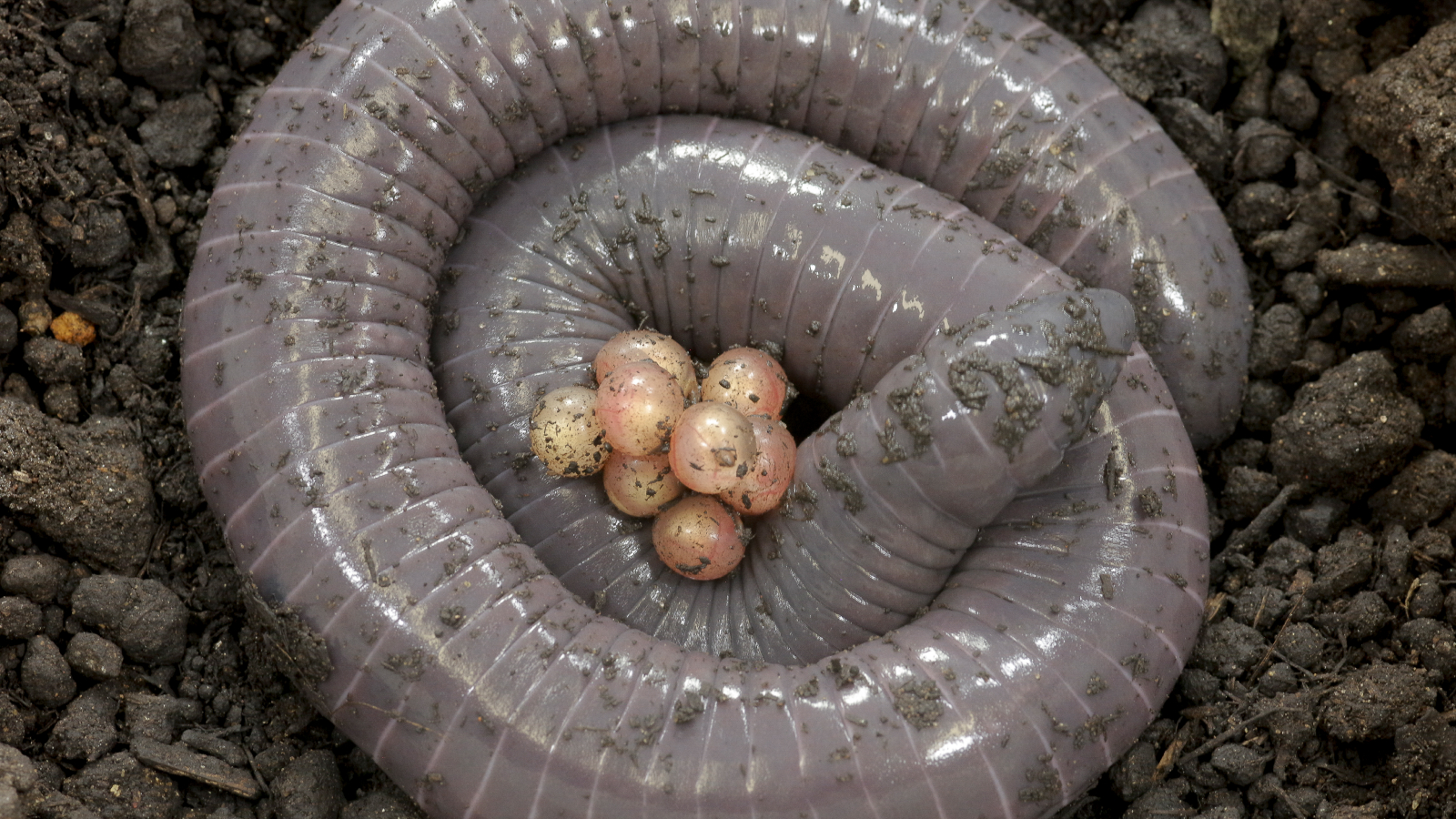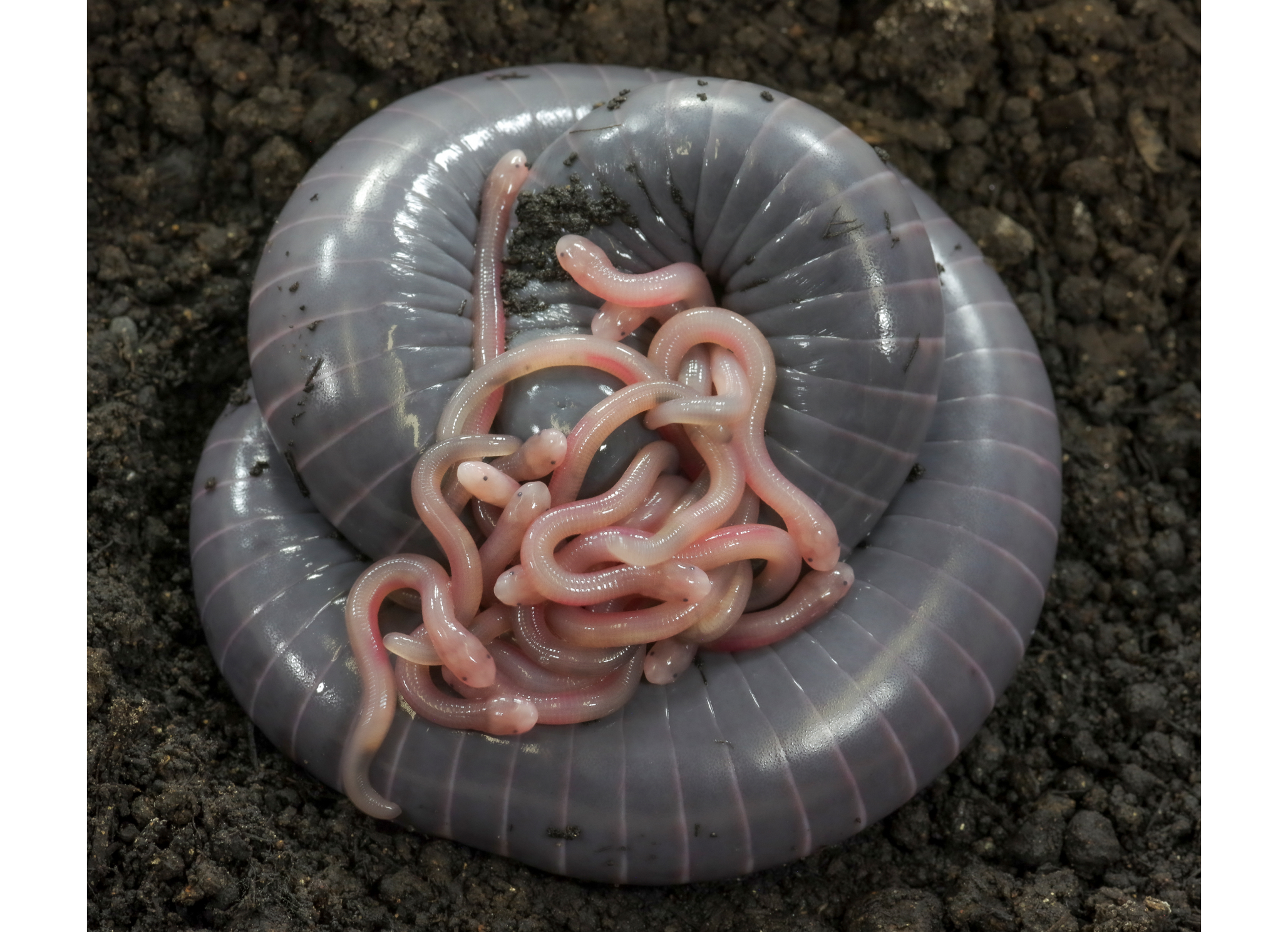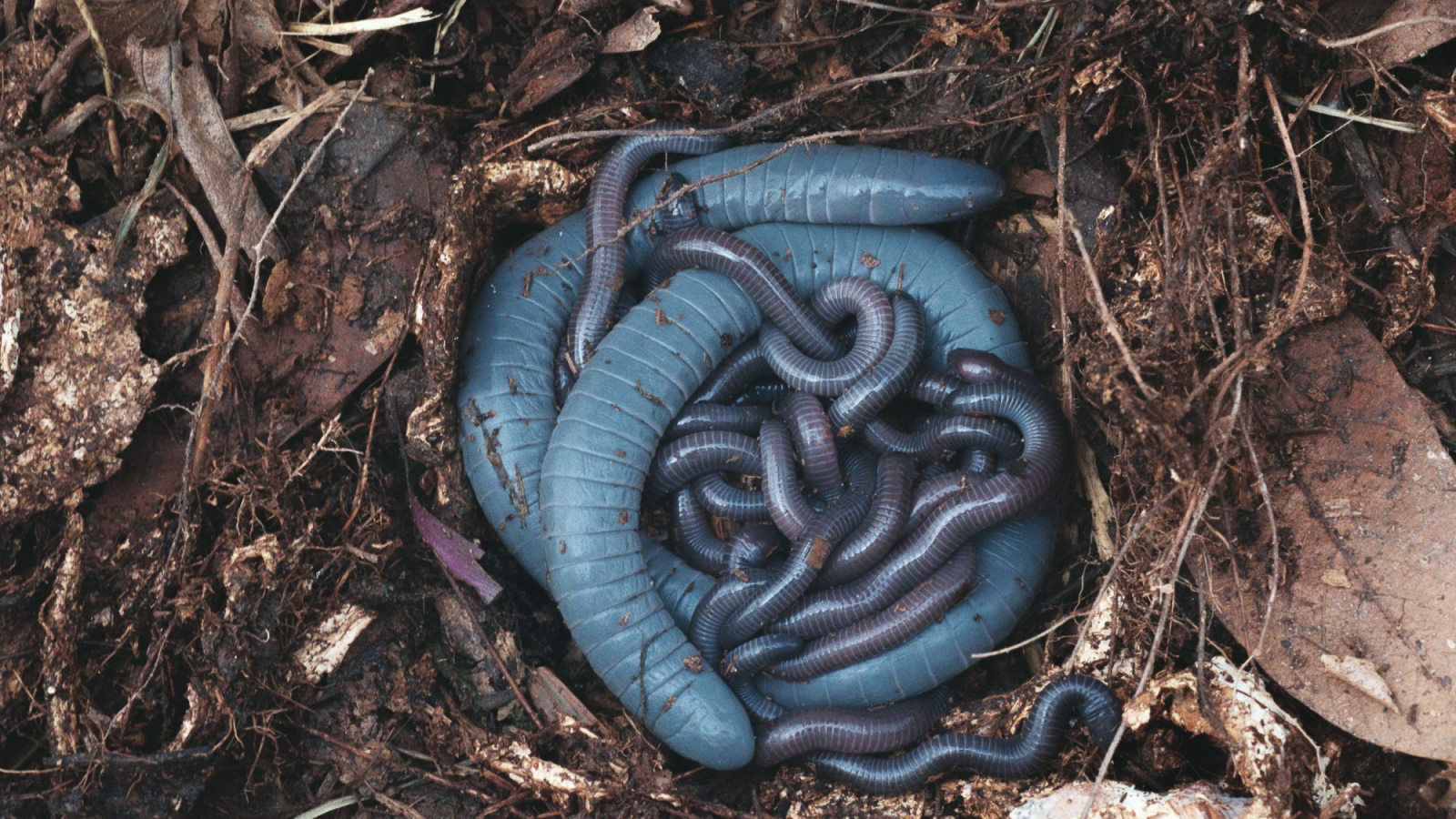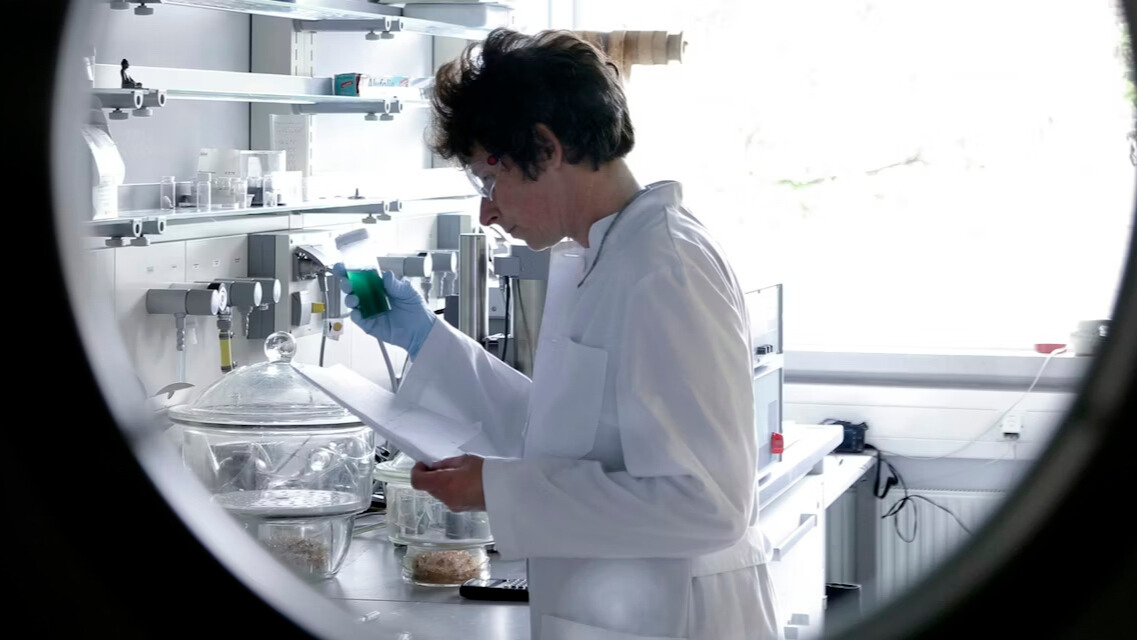Worm-like creature squirts 'milk' from its butt to feed its young in 1st-of-its-kind video
Video footage captures an egg-laying amphibian "nursing" its babies with a nutritious liquid similar to mammalian milk.
In incredible new footage, a worm-like creature feeds its babies with a milk-like substance similar to what mammals give their newborns. It is the first time this behavior has been documented in caecilians.
In the first-of-its-kind video, a female Brazilian ringed caecilian (Siphonops annulatus), an egg-laying amphibian, produces a transparent liquid to feed its offspring. The female's brood communicates with physical touch and high-pitched sounds to encourage the mother to secrete the viscous liquid from its anus so they can feed.
This maternal behavior was documented in a study published March 4 in the journal Science.
Amongst vertebrates that produce eggs, offspring depend on obtaining nutrition from the embryonic yolk sac, the external organ of an embryo.
Related: Watch translucent cockroach babies burst from their egg cases in skin-crawling footage
But some species have developed parental care behaviors and specialized food for their offspring. Other than in mammals, different types of maternal care have been observed in spiders, cockroaches, fish and birds — and now in this egg-laying amphibian.
Brazilian caecilians are a group of strange, legless amphibians that move like worms. Some species give birth to live young; others, like S. annulatus, lay eggs.
Get the world’s most fascinating discoveries delivered straight to your inbox.
Using their teeth, the offspring nibble and touch the mother's behind with their snouts to encourage her to expose her cloaca — the opening of the rectum, urinary ducts and genital ducts known as a vent — to release the milk-like substance. This method of communication from the offspring is considered a type of begging behavior, according to the study.
The mother fed her offspring the "milk" daily for the first two months after they hatched. During this time, the mother did not leave her brood, not even to feed.
Further analysis of the milk showed its composition of long chain fatty acids — similar to the secretions of mammals where fats are the primary source of energy provided during parental care.
The research team collected the caecilians during fieldwork in the Brazilian state of Bahia and kept the critters in captivity with their broods. All of the babies had light-pink, semi transparent bodies which indicated that they were in the initial or medium stage of development after hatching.
Aside from this milk-like substance, caecilians are known to provide their young with another nutritional meal — their skin. Brooding mothers lose their dark coloration and appear pale. Glandular secretions transform the outer layer of the skin into a nutrient-packed food source that's rich in fats. After hatching, the offspring use their teeth to scrape away the mothers fleshy skin.
Because most caecilian species are terrestrial and live underground in burrows, they are very difficult to find and thus are little understood. "The study by Mailho-Fontana et al. opens new areas of research for caecilians and for amphibian biology in general," Marvalee Wake, a biologist at the University of California, Berkeley, who was not involved in the study, said in a statement. "It also provides an expanded approach to investigate the evolution of derived modes of reproduction in the broadest sense, and to better understand key aspects of evolutionary biology."

Elise studied marine biology at the University of Portsmouth in the U.K. She has worked as a freelance journalist focusing on the aquatic realm.





